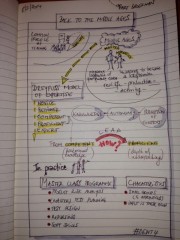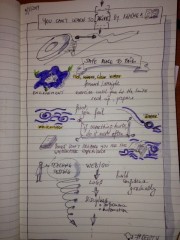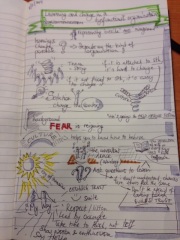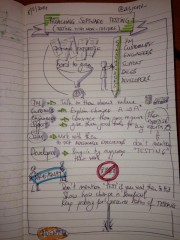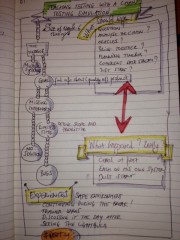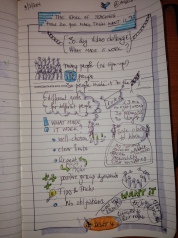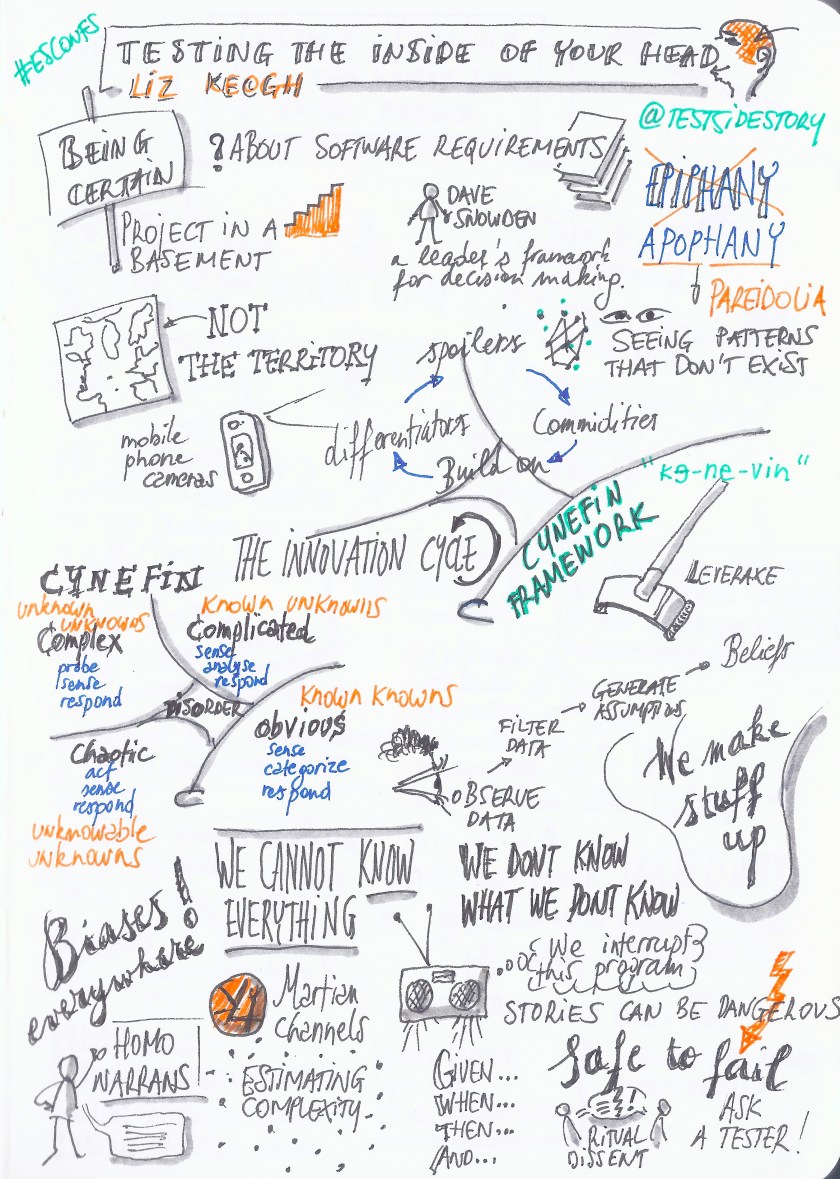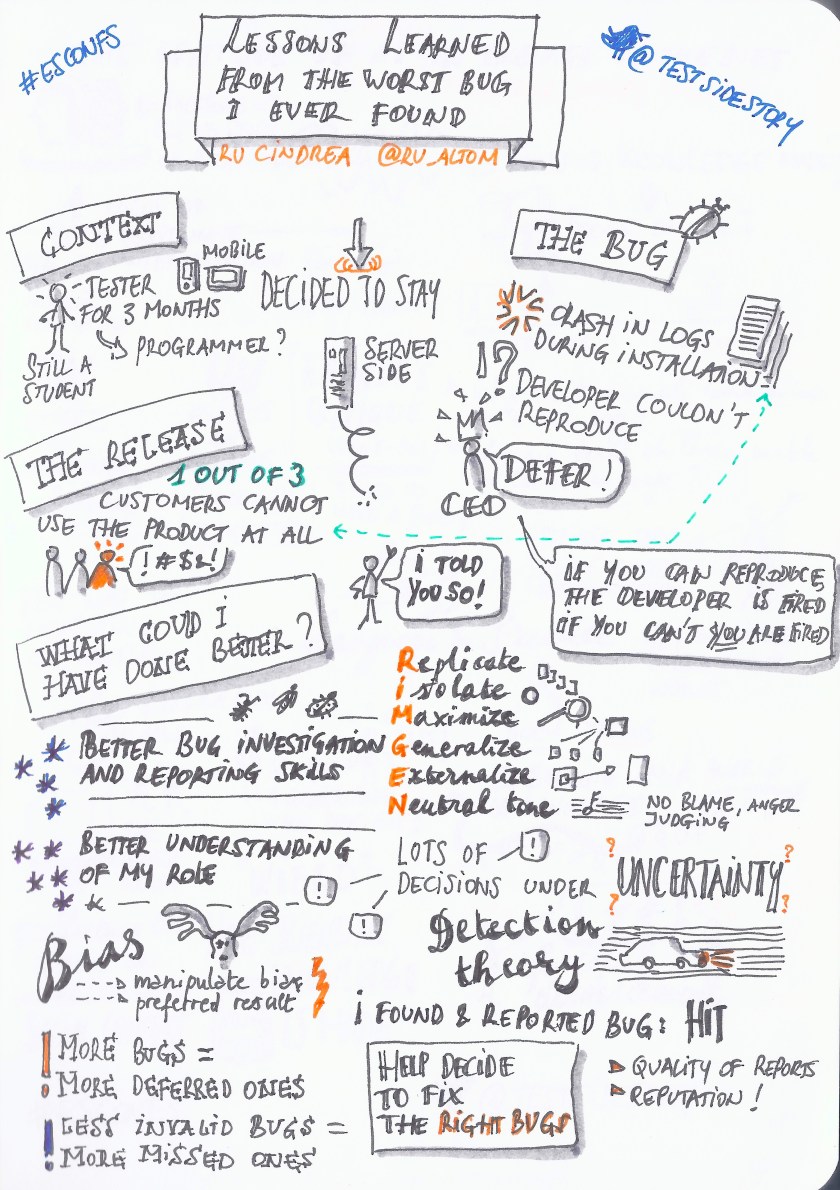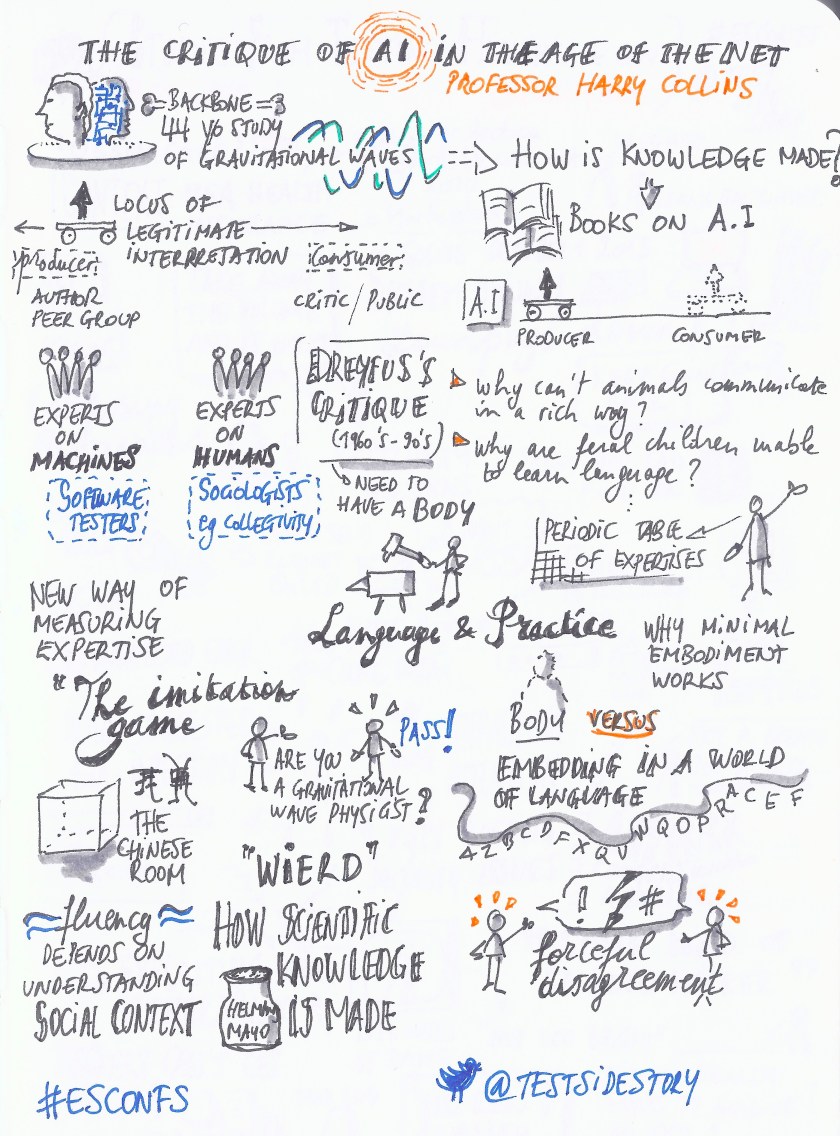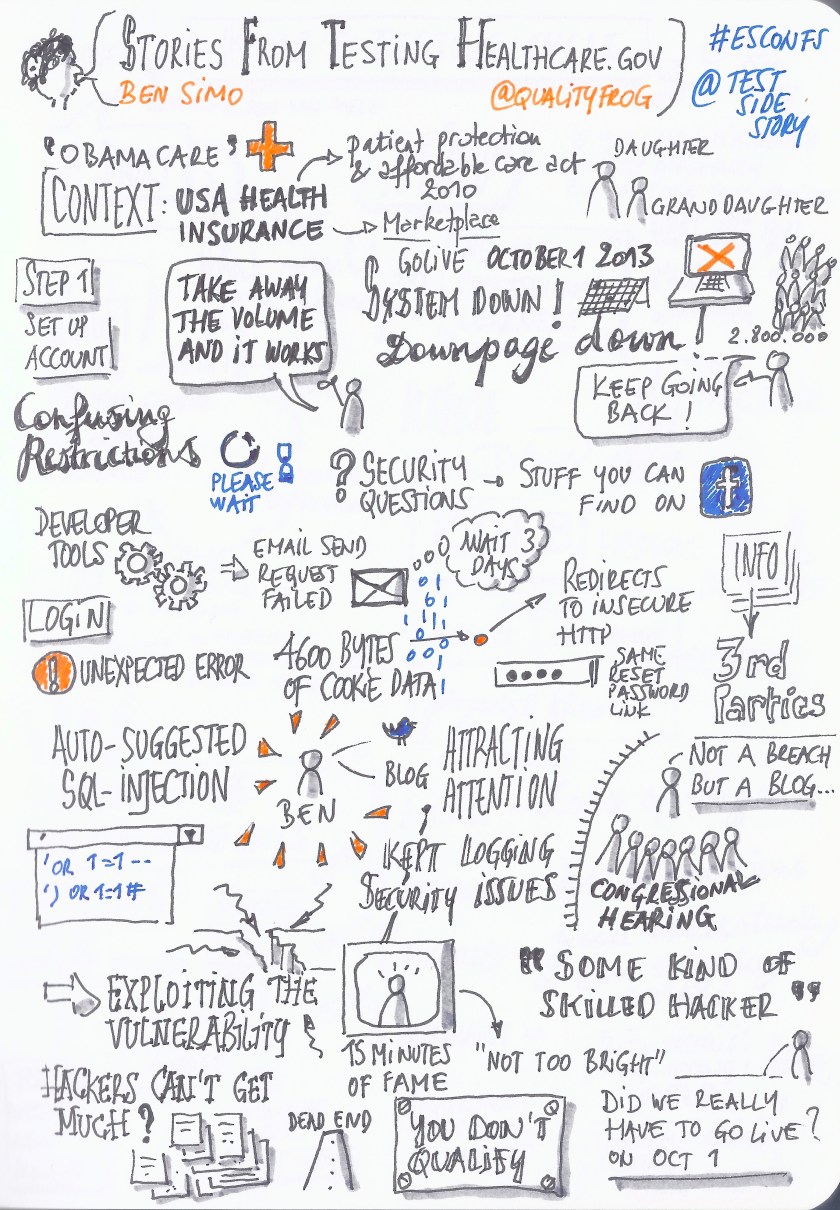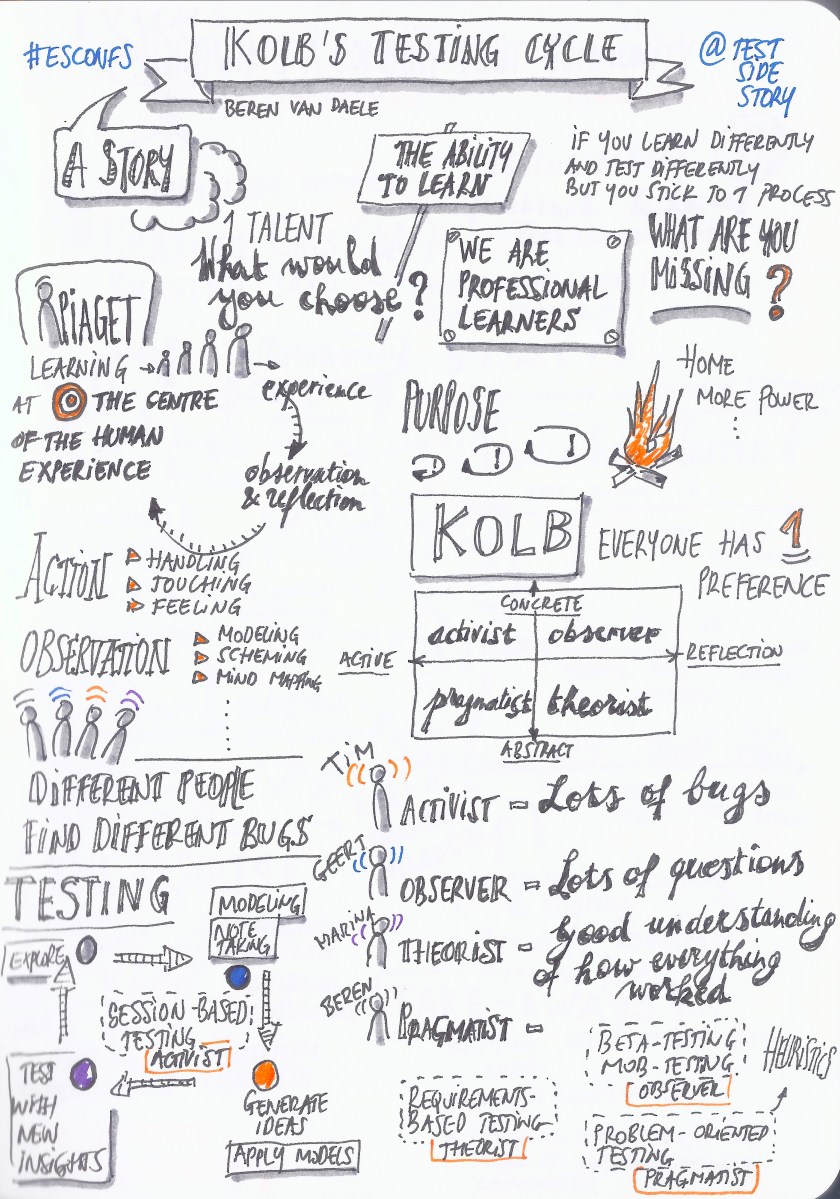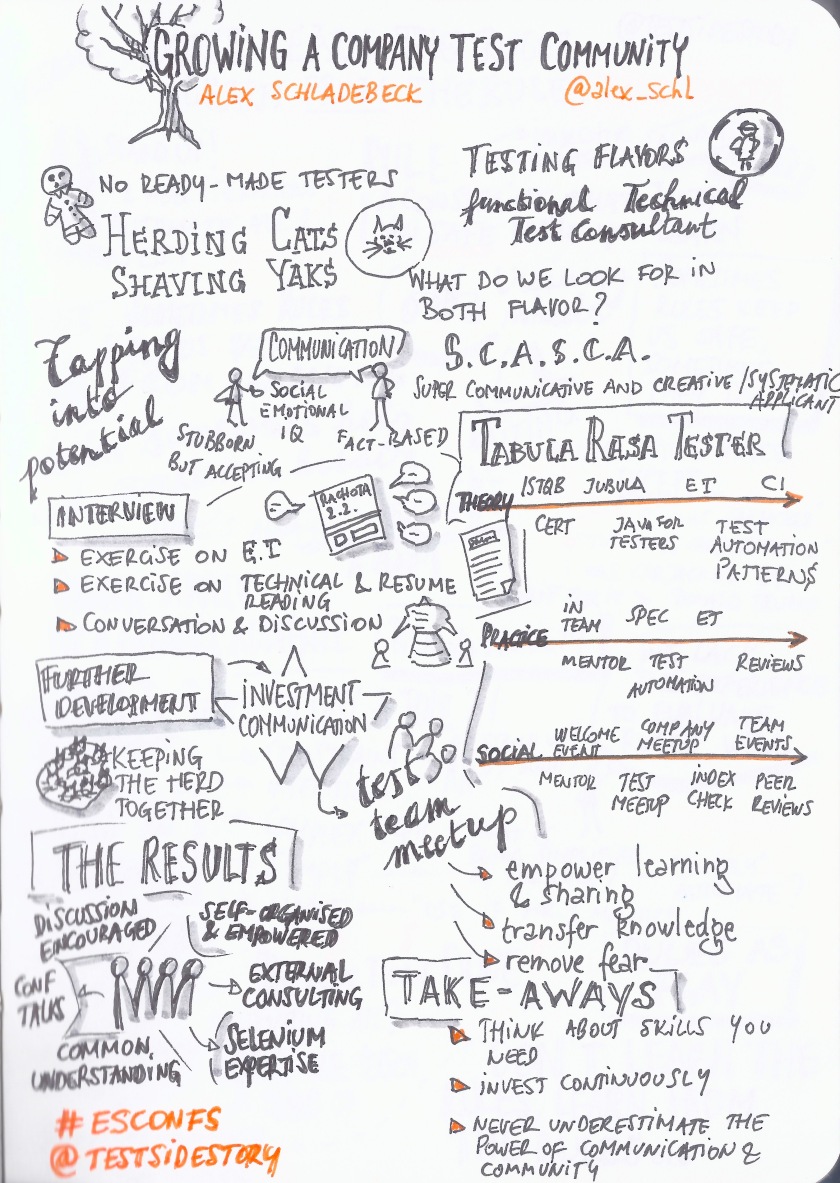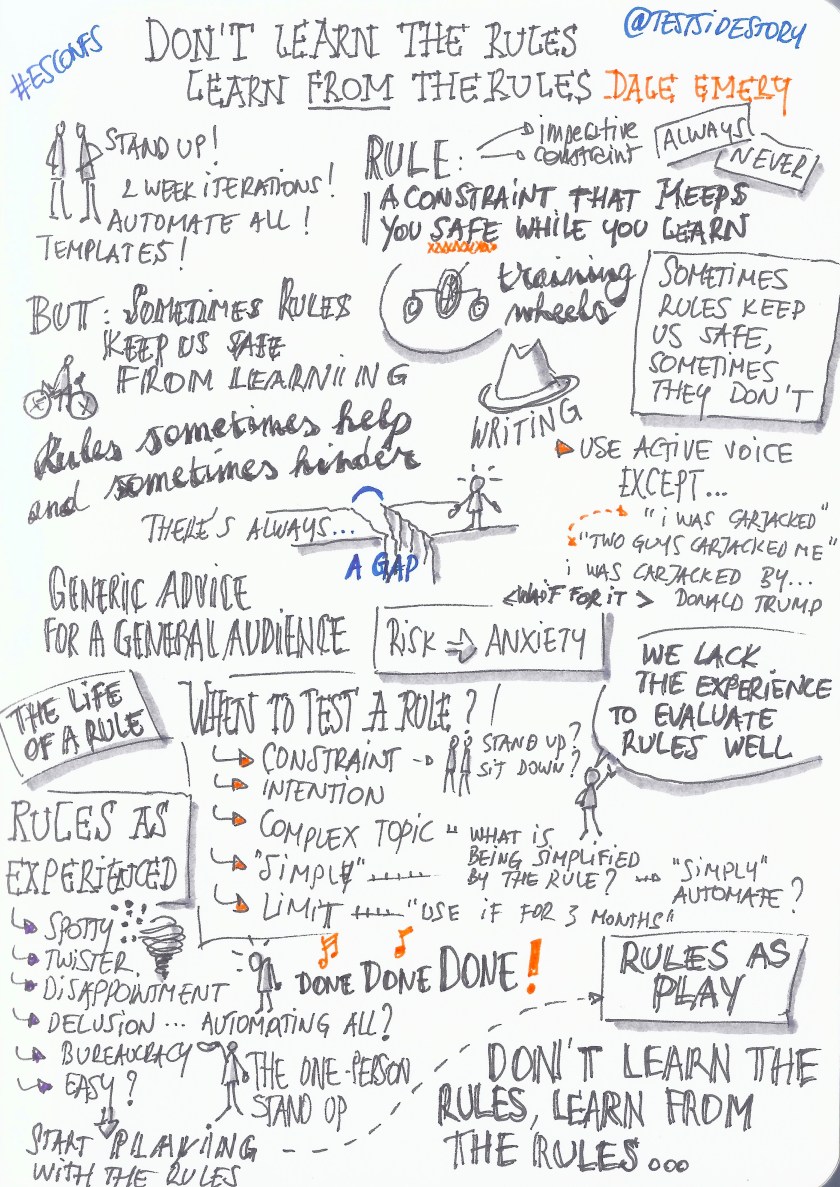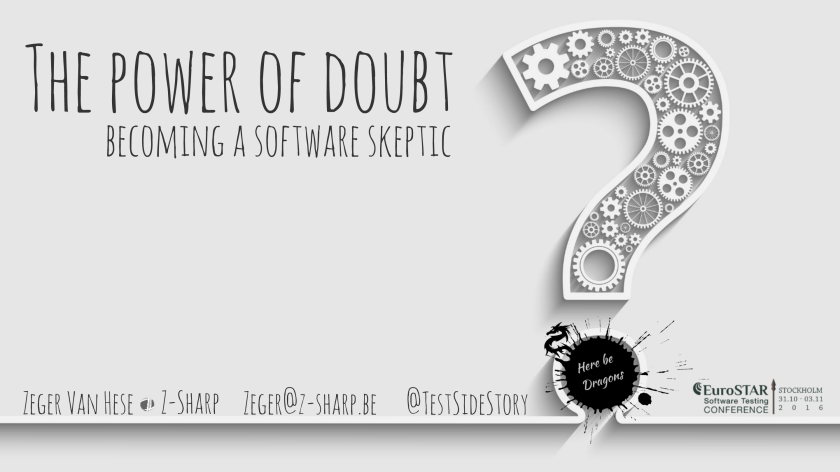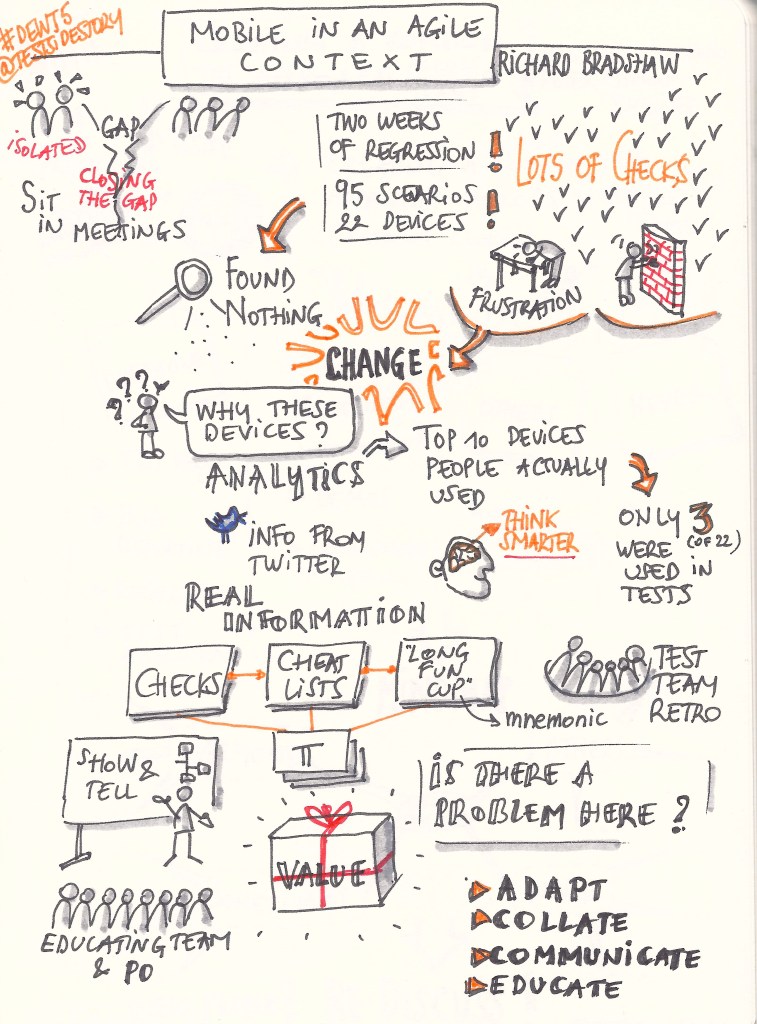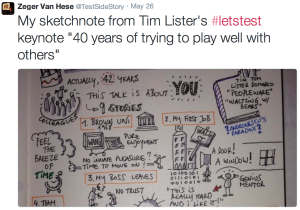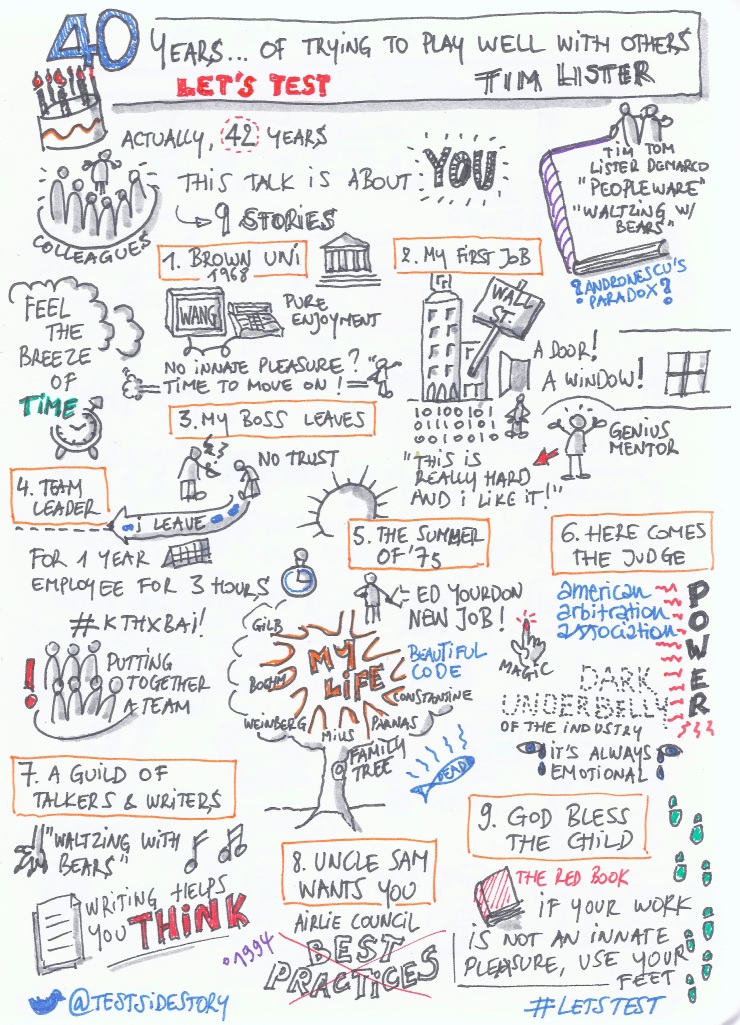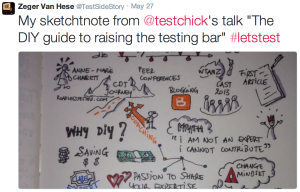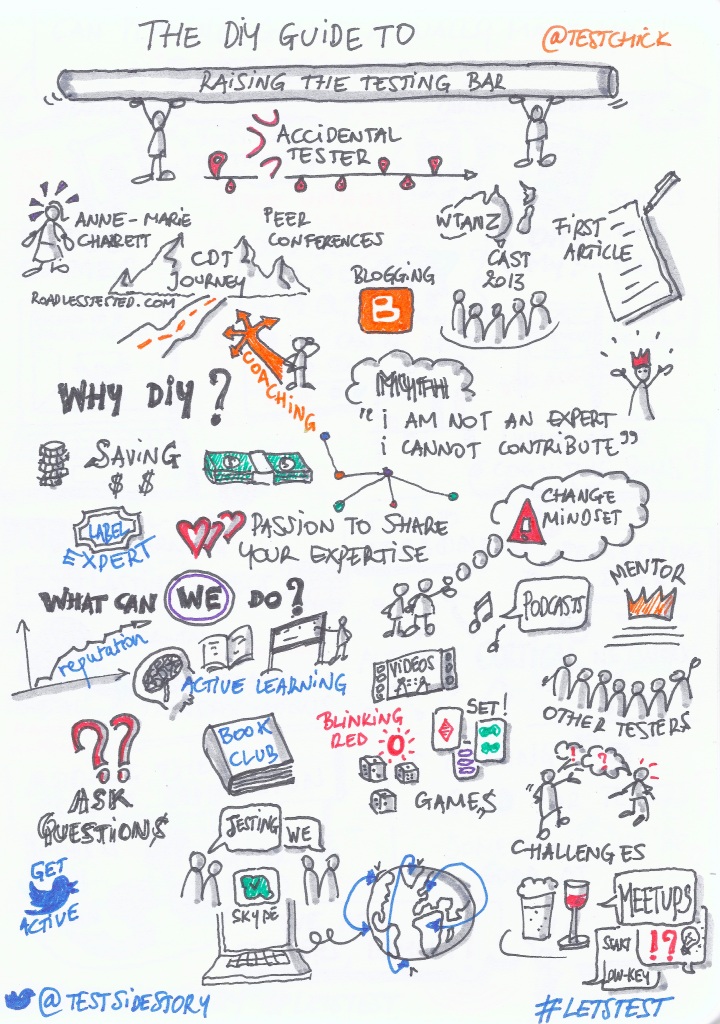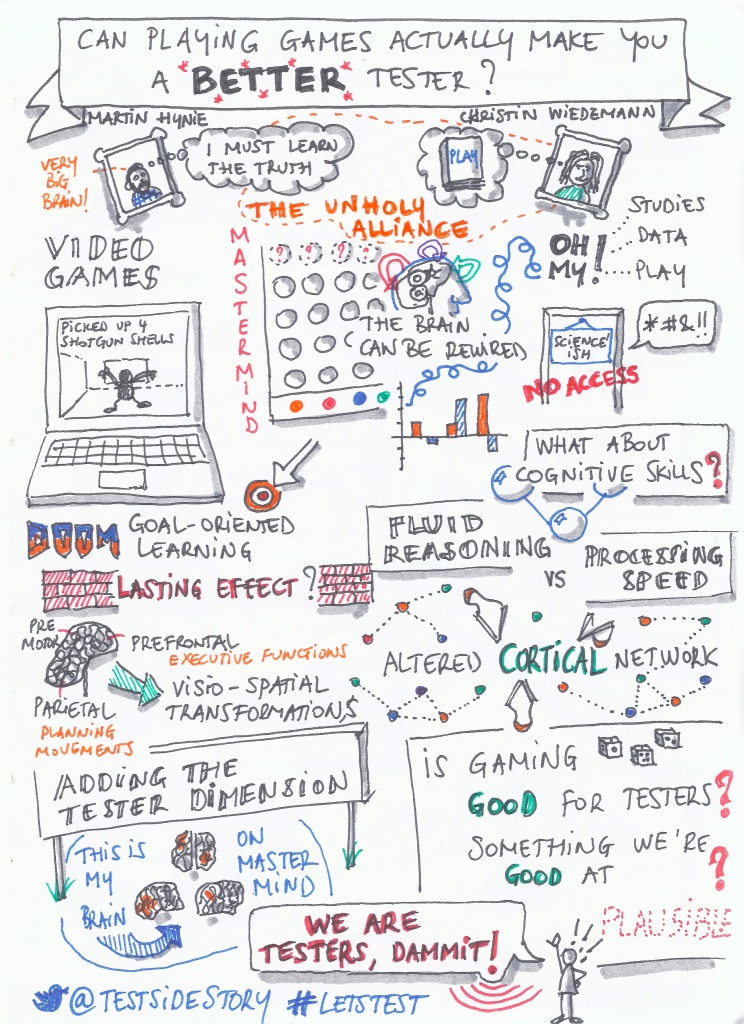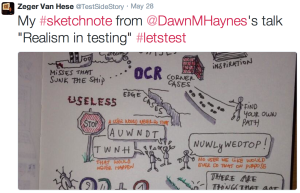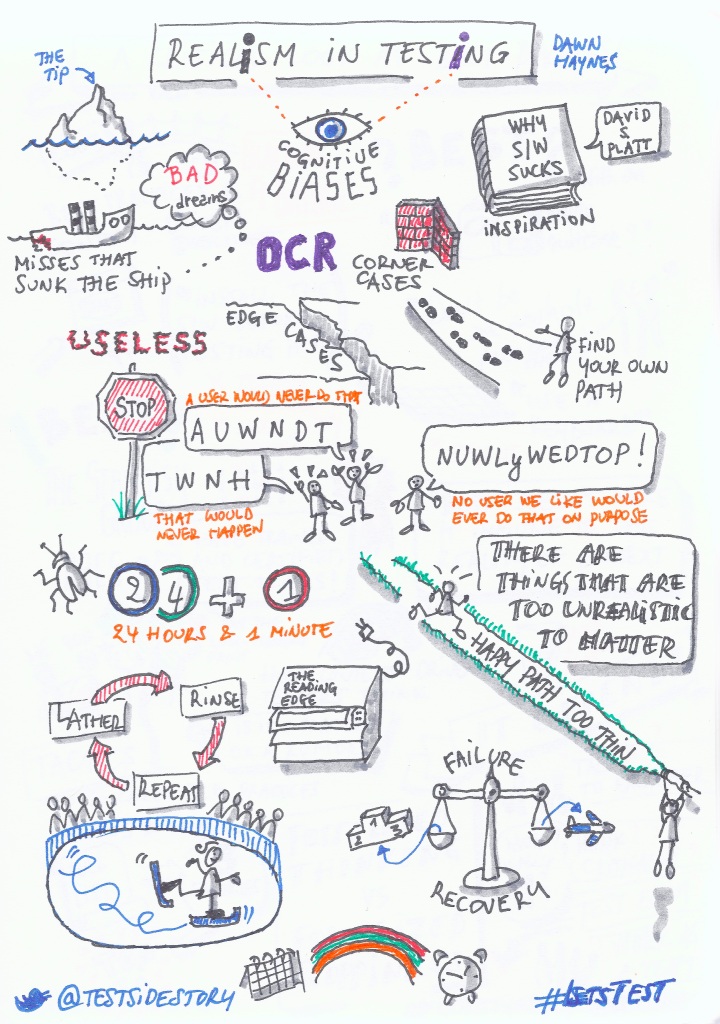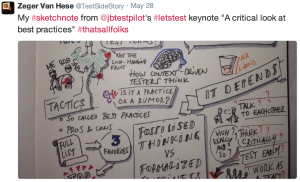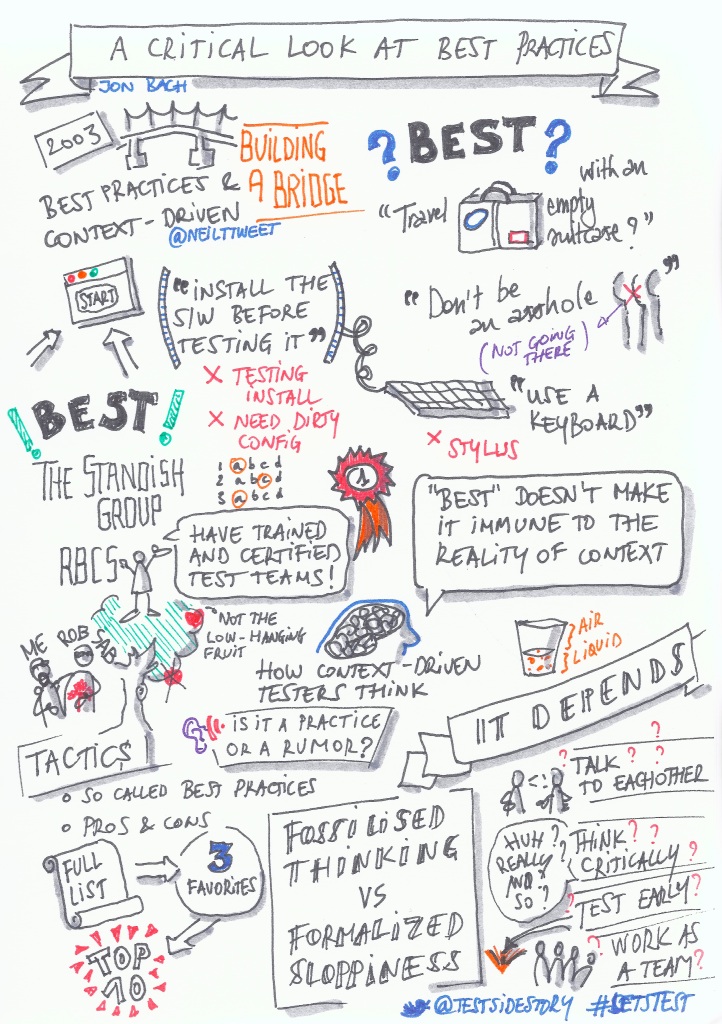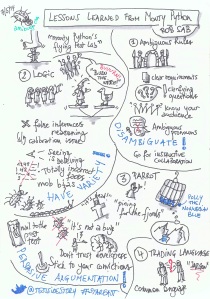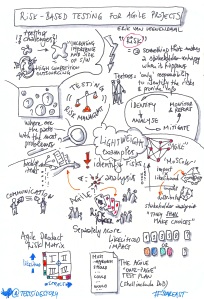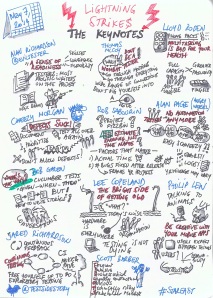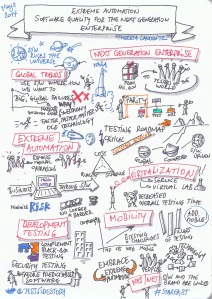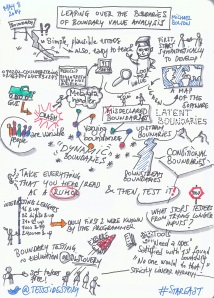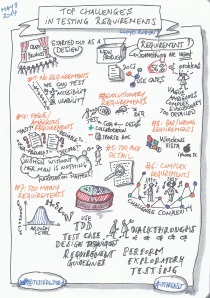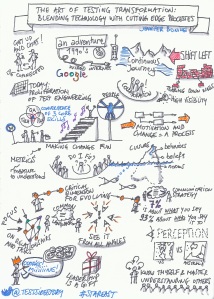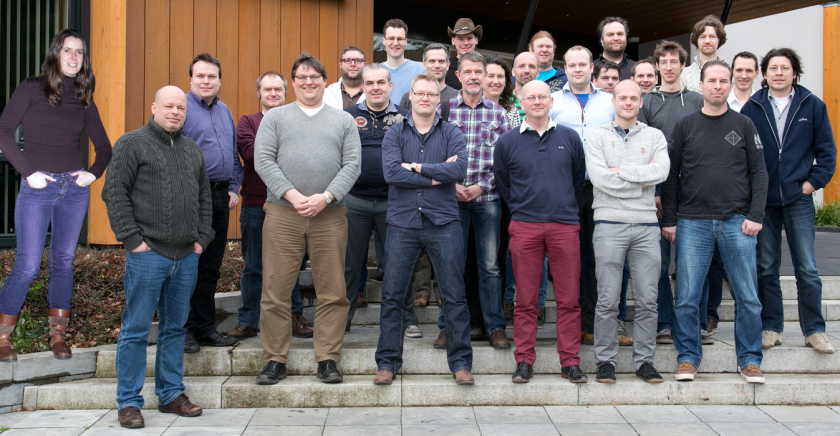
From left to right: Jeanne Hofmans, Rob van Steenbergen, Jurian van de Laar, Peter Simon Schrijver, Jean-Paul Varwijk, Bernd Beersma, Huib Schoots, Arjen Verweij, Zeger van Hese, Joris Meerts, Markus Gärtner, Bart Broekman, Angela van Son, Pascal Dufour, Ard Kramer, Jeroen Mengerink, Kristoffer Nordström, Philip Hoeben, Daniël Wiersma, Joep Schuurkes, Duncan Nisbet, Eddy Bruin, Wim Heemskerk, Ruud Cox, Richard Scholtes, Ray Oei
Teaching Software Testing
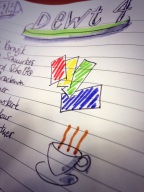 In the weekend of 7-9 February, the fourth edition of DEWT took place at Hotel Bergse Bossen in Driebergen, the Netherlands. DEWT stands for the Dutch Exploratory Workshop on Testing and is a LAWST-style peer workshop on testing like its older siblings LAWST, LEWT and SWET. This means a presentation is followed by a facilitated discussion that goes on as long as it brings value.
In the weekend of 7-9 February, the fourth edition of DEWT took place at Hotel Bergse Bossen in Driebergen, the Netherlands. DEWT stands for the Dutch Exploratory Workshop on Testing and is a LAWST-style peer workshop on testing like its older siblings LAWST, LEWT and SWET. This means a presentation is followed by a facilitated discussion that goes on as long as it brings value.
This edition was extra special to me since I volunteered to be the Content Owner during our preparatory meeting in september. Jean-Paul Varwijk agreed to fill the Conference Chair role and Peter Simon Schrijver would be the main facilitator. Why yes, you do need a good facilitator to make this kind of thing work.
The main theme of this edition was “Teaching Software Testing”
In this edition we also added the obligation – for all attendees – to send in a proposal for an experience report. I wanted attendees to look at teaching software testing in a broad sense, and asked for experience reports on:
- How software testing is taught
- Unconventional or alternative ways of teaching software testing
- Lessons learned by teaching software testing
- Learning how to teach software testing
- The receiving end of teaching – learning (being taught)
- The transfer of theoretical versus practical knowledge
- Teaching novice testers versus teaching experienced ones
- Acquiring teaching skills
- …
Apart from the DEWT core members (10), an additional 16 people were invited, of whom three came from abroad – Markus Gaertner (D), Duncan Nisbet (UK) and Kristoffer Nordström (SE). Actually, that makes four since I am from abroad (B) as well – I keep forgetting that I am DEWT’s legal alien.
Friday, February 7
The first night of a DEWT conference is usually an informal meetup, with a welcoming dinner for the people that can make it in time. A great evening it was, with strangers getting to know each other and old friends catching up. Lots of games and testing talk – and in some way or another, My Little Pony (™) became a topic as well. There were not as many drinks as we would have liked, though, since our first evening happened to coincide with a wedding in our regular hangout, the Grand Cafe. This meant we were banned to a room with a part-time waiter, dividing his inevitably part-time attention (I’m guessing 85/15) between drunk party people and relatively sober software testers. His selection of Belgian beers and copious amounts of deep-fried snacks (it is common knowledge that Markus Gaertner will attend any meetup that involves bitterballen) made up for it.
We ended the night giving the bride and groom some heartfelt marital advice, and by sipping from that curious bottle Duncan brought from Gibraltar – Patxaran (Zoco). When Duncan started cleaning tables to compensate for our invisible waiter, we knew it was time to go to bed.
Saturday, February 8
In front of a notably bigger group than we ended the day with on friday (some people were only joining in on saturday morning), Jean-Paul, Peter and myself kicked off the conference. In the previous weeks, the three of us had come to an agreement on which talks should go highest on the list, being well aware that in the end, a schedule like this is always tentative since you never know when discussions are going to end or where the energy of the group will be going.
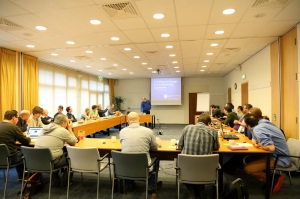 Kristoffer Nordström went first with “Learning and change in a dysfunctional organisation“, illustrating the difficulties of a consultant that represents both management and the outside. Are learnings and change even possible is this situation? He compared a team with a spring that is attached to context and culture. When a string is attached to something, it is very hard to change. You can bend the spring and make it work at first, but inevitably, the spring – the team – will veer back to its original position. He explained how he tried to cope with his plight: establish trust, show passion and enthusiasm, lead by example, show respect, take time to teach instead (not tell). Even simple things like smiling and saying hello to people helped him to achieve his goals. Kristoffer’s experience report was rich and well-prepared, and touched many things which I could relate with. The discussion afterwards went on longer than planned, but hey, we’re all flexible, right?
Kristoffer Nordström went first with “Learning and change in a dysfunctional organisation“, illustrating the difficulties of a consultant that represents both management and the outside. Are learnings and change even possible is this situation? He compared a team with a spring that is attached to context and culture. When a string is attached to something, it is very hard to change. You can bend the spring and make it work at first, but inevitably, the spring – the team – will veer back to its original position. He explained how he tried to cope with his plight: establish trust, show passion and enthusiasm, lead by example, show respect, take time to teach instead (not tell). Even simple things like smiling and saying hello to people helped him to achieve his goals. Kristoffer’s experience report was rich and well-prepared, and touched many things which I could relate with. The discussion afterwards went on longer than planned, but hey, we’re all flexible, right?
Next up was Arjen Verweij with “Preaching software testing: evangelizing testers among non-testers“. In his experience report, he described how he advocates for testing with different stakeholders:
- Talk to project managers about value
- Inform and explain customers about changes in the software
- Convince engineers that you need their expertise.
- Help support people by providing them with good tools that facilitate bug reporting
- Work with sales to set reasonable expectations
- Get buy-in from the developers by supporting their work
One of Arjen’s take-aways was to not mention “testing” if you want non-testers to test, which spawned a hefty discussion on-site in which several people on twitter got involved.
After lunch we decided to go for a walk in the woods to avoid that dreaded carb coma. The hotel staff provided us with instructions for a walk, and it turned out to be a strictly scripted procedure: no map, but a list of written instructions. Great, a bunch of (mostly) context-driven testers asked to follow a walking script. As could be expected, we got lost in a heartbeat. Our explorer’s instinct – supported by many a gps module – got us back with only 20 minutes delay.
Aside from harassing us with more space unicorn songs then we could handle, Markus Gaertner got us up and about with a workshop that used the principles from the book “Training From the Back of the Room!: 65 Ways to Step Aside and Let Them Learn” by Sharon Bowman, after which he elaborated on the 4 C’s, a framework to help design classes that leverage accelerated learning. The acronym stands for “Connection, Concept, Concrete Practice, Conclusion”. During the connections step, learners make connections with what they already know about the topic at hand. In the concepts step, learners take in new information in multi-sensory ways: hearing, seeing, discussing, writing, reflecting, imagining, participating and teaching it to others. The concrete practice step serves to actively practice a new skill using the new information, participate in an active review of what they have learned and again teach others what they know or can now do. During the conclusions step, learners summarize what they have learned, evaluate it and make a commitment to use it at work or in their lives.
Joep Schuurkes and Richard Scholtes were up next with “Teaching testing with a chain testing simulation“, in which they described their experiences in designing an apparently simple chain testing simulation exercise. In it, participants were provided with five laptops running the applications that make up the chain, and each was assigned to one of the laptops (or was assigned the role of testing coordinator), after which the group was given the assignment to “perform a chain test”. Joep and Richard contrasted the things they thought should happen with the things that actually happened, which lead to a couple of nice surprises. Chaos ensued, apparently, and people stayed on their own island for way too long. But it proved an engaging format for all involved – people continued during breaks, were discussing it the days after and it led to quite some aha-moments as well. Another take-away: putting an empty chair in between two people is an effective means to stop all communication.
Bart Broekman‘s experience report brought us “Back to the Middle Ages“. Or at least, a part of the theory did. He talked about the master-apprentice model, which is fundamentally different from the teacher/student model which is now so common. Later on he linked it to the Dreyfus model of skill acquisition. Bart saw the biggest gap to be bridged in going from “competent” to “proficient”. How can we make our students make that big leap? Bart went on to explain how he tried to do that through organising masterclasses, working with the student’s own content and real-life problems to solve.
By the time the discussion after Bart’s report died down, dinner was calling, and we gladly obliged. The evening was filled with drinks, puzzles, games, poetry recitations and Dutch people winning gold, silver and bronze medals in the Winter Olympics. Leave some for us, would you?
Sunday, February 9
Sunday morning saw the first (granted, UK-imported) Gibraltarian DEWT-invitee ever take the stage: Duncan Nisbet with a report on his experiences teaching testing to new/non testers, “You can’t learn to drive by reading a book“. A misleading title, since he proceeded to compellingly relate it to how he used to train his pupils in wildwater kayaking. In that line of sport, it is important that you first give your students a safe place to fail, like clear, calm and warm water. Whitewater is an unforgiving place for newbies. Slowly progress, and if you fail, do it more often. Books don’t prepare you for the whitewater experience. Duncan then explained how he tries to teach testing to newbies in the same way. Start simple and build confidence gradually. First, give them a Web/GUI to play wit, later make them aware that of the existence of logs that can help them in testing, and then on to other more specialised disciplines like performance and automation. The facilitated discussion afterwards spawned so many question threads that Simon Schrijver dedicated a whole blogpost on how he facilitated it.
Angela Van Son is a DEWT regular, although she is not a tester. Angela is a professional (procrastination) coach, and she made the program because I was convinced that she could contribute to the topic by offering a view on teaching in general. In “The skill of teaching: How do you make them WANT it?“, she told us about the 30 Day Video Challenge put out by Holly Sugrue that she participated in. She witnessed how Holly managed to energize and inspire the group to deliver in this challenge, a remarkable feat considering that the different people all had different goals to participate. Angela then analyzed what was so peculiar about this challenge. How did the challenge make the people want to master it? As it turned out, it was a combination of many things. It was well chosen, with clear limits. There was a lot of playful repetition that never got boring, and great group dynamics that pushed people forward. There were no obligations – it was a safe place to learn.
After lunch, to finish on a lighter and more active note, we scheduled a workshop on the design of exercises to teach testing, led by Huib Schoots and Ruud Cox. The crowd got divided in several small groups and given the task to design an exercise to teach some testing concepts. That exercise would then be run by one of the other groups followed by a debrief. The tricky part was of course that the time to accomplish this was very limited. I already knew from attending Jerry Weinberg’s Problem Solving Leadership that designing a good and fun experiential exercise can be very, VERY hard. But given the circumstances, the teams did a good job – resorting to ruthless peppermint crushing and exploratory walking. I felt that the debrief helped a lot in seeing where our own exercise could be improved.
This concluded DEWT4. Two + days filled with learning and fun. I hoped to achieve a good variety in the topics and I am glad how it turned out. The atmosphere was focused yet relaxed, and everyone seemed to enjoy themselves. A big thank you to all the participants for their time, their stories and their passion.
Sketch-notes
To finish of this lengthy report, here are some sketch-notes I made during the weekend. Click the thumbnail to see a bigger version.
For other reports and impressions of DEWT4, check out the DEWT after party blog page.
